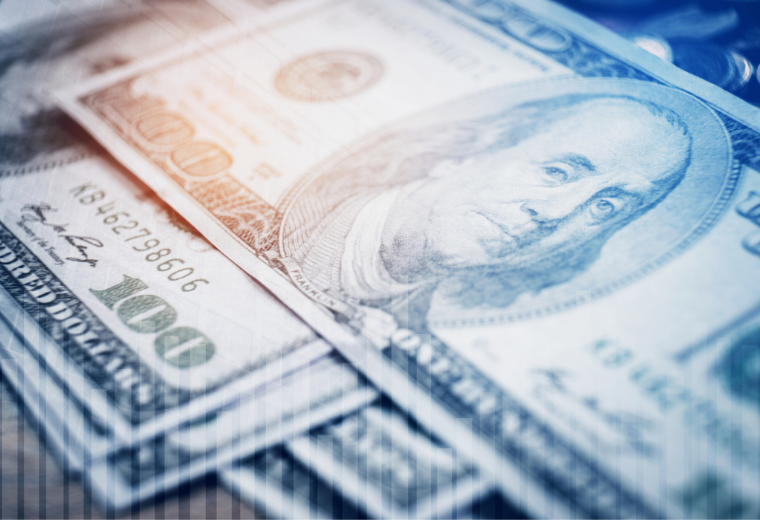Giving Dividend ETFs Their Due in a Spot Bitcoin World

Nov. 3 marked a special 20th anniversary in the history of ETFs—and arguably, one worth a pause in the financial world.
On that day in 2003, Barclay’s Global Investors (now part of BlackRock Inc.) launched the iShares Select Dividend ETF (DVY). It’s acknowledged as one of the first dividend ETFs, if not the first, and today boasts more than $19 billion in assets.
But you’d never know that dividend ETF milestone given the breathless chatter about the shiny new object on the block: the spot bitcoin ETF. Investors have poured billions into the 10 new exchange-traded funds since they began trading Jan. 11, taking the focus for a while off the approximately $8 trillion invested in the thousands of U.S.-traded ETFs.
If spot bitcoin ETFs turn heads like a supermodel, then dividend ETFs in 2024 might as well be the frump. For example, the spot bitcoin ETFs racked 10% of DVY’s total tally in three days.
Yet to dismiss these ETFs outright would be a shame, especially in the case of the ProShares S&P 500 Dividend Aristocrats ETF (NOBL). "Aristocrats" in this case means companies that have increased dividend payments annually for at least 25 years. Behold: NOBL is up 16% over the last three years. How much more reliable does it get than that?
As opposed to, say, bitcoin, which is a currency whose creator remains unknown, has no central bank to back it, or any tangible asset supporting its worth unless you count a lots and lots of faith.
“In the ever-shifting world of investments, dividend ETFs have been a beacon of stability and income for many,” said Shawn Carpenter, Chairman and CEO of stock tracking app StockAlarm. “They're navigating through the calm and the storms of the market seas.”
Yet all that glitters, even though it’s not gold, still has the power to entrance even the most savvy investor. And it remains to be seen whether spot bitcoin ETFs continue a story line as old as the first Bedouin swapping his prized camel for a sparkly-but-fake gem necklace.
Dividend ETFs Quiet, Unsung Performance
Fact: Too many investors get sucked in by the thing everyone’s talking about, even if the talk is cheap. Dividend ETFs hardly fit the mold of Uber’s horrible 2019 IPO, or the rash of special purpose acquisition companies, referred to as SPACs, whose offspring have imploded, including Lordstown Motors and Clover Health.
Meanwhile, let’s not forget how tech stocks overshadowed the category, especially in post-pandemic times. “Tech stocks' substantial gains made traditional dividend investment yields appear low in comparison,” said June Jia, a quantitative researcher at GF Securities and owner of Canny Trading.
“However, this situation is not everlasting,” Jia noted. “It's a consequence of the Federal Reserve's highly accommodative monetary policy. With an expected shift towards tighter policy, tech stock yields will likely diminish, bringing dividend investments back into the spotlight.”
Arguably, they’ve deserved to be in the spotlight all along, or at least in a strong supporting role. For one investment—be it a spot crypto ETF or a stalwart fund with decades of history—does not a diversified portfolio make.
“Many experts see value-oriented equities as extremely attractive as we head into 2024,” said Nick Elward Sr., SVP, Head of Institutional Product and ETFs at Natixis Investment Managers. “Some say these stocks are very cheap relative to growth equities after growth strongly outperformed in 2023. With this valuation gap, some investors are focused on both the capital appreciation and yield opportunity in dividend and options-income ETFs."
None of this is to say that spot crypto ETFs won’t realize the promise many investors see, or want to see. That said, you won’t find everyone jumping on this bitcoin bandwagon, including the investment giant Vanguard. It has no plans to enter the fray—though it’s worth noting that the company’s place and success in the dividend ETF world are well established.
The Vanguard Dividend Appreciation ETF (VIG) has close to $74 billion in assets and with an expense ratio of just 0.06%, it’s considered both the largest and one of the strongest players in the field. It’s up 10% year over year and dates to 2006—meaning its 20th anniversary is just two years away.
